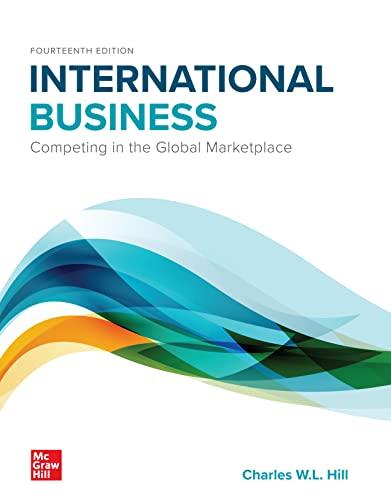The apparel industry in Bangladesh has been one of that countrys great success stories. Bangladesh is a
Question:
The apparel industry in Bangladesh has been one of that country’s great success stories. Bangladesh is a densely populated nation of over 160 million people at the mouth of the Ganges River next door to India. In 2018, the country exported around $33 billion in garments. Bangladesh is now the world’s second-largest exporter of readymade garments, just behind China. The textile and apparel sector accounts for about 20 percent of the country’s GDP and 80 percent of its exports, and it employs 4.5 million people. Products made in the country end up on the shelves of retailers around the world, from Walmart and The Gap to H&M and Zara. The success of its textile industry has helped Bangladesh achieve very high levels of economic growth, which are lifting the country out of the ranks of the world’s poorest nations. Over the past decade, Bangladesh’s economy has grown almost 200 percent, one of the best performances in the world.
Bangladesh’s export success in apparel rests upon low labor costs. The relentless drive to lower the cost of clothing in developed countries where competition between retailers is intense has driven apparel manufacturers to outsource production to the lowest-cost locations. In 2019, the minimum wage for garment workers in Bangladesh was about $95 a month, significantly lower than the minimum wage in China, which ranged from around $165 a month in some rural areas to $358 a month in Shanghai (in China, the minimum wage is set by provinces and cities).
There are few regulations in Bangladesh, and as one foreign buyer noted, “There are no rules whatsoever that can’t be bent.” This may mean that during busy periods, workers may have to work 12-hour shifts, seven days a week. While it is true that the lack of regulations keeps costs down, it is also the case that the combination of cost pressures and lax regulation can lead to questionable practices, including the use of child labor and a poor safety environment for workers.
For example, in 2015 the charity World Vision profiled the case of a 15-year-old girl called Bithi. Bithi had been working in a textile factory since she was 12 years old. World Vision described Bithi as squished inside a second-story room in Dhaka, Bangladesh, flanked by 20 other women, hunched over her sewing machine, illuminated by harsh fluorescent lights, making pockets for designer blue jeans that she’ll never be able to afford herself. She worked fast, stitching 60 pockets an hour, eight hours a day, for about $1 in daily wages. Abject poverty and a sick father forced Bithi’s family to send the two oldest daughters to the garment factories. Her mother was unapologetic about sending Bithi to work at 12. “There was no food. Not even rice,” her mother explained, so Bithi was sent to the factory. “As a mother I feel sad,” she said, “but I still have to be realistic.”
Bithi’s story is by no means unusual. Research suggests that child labor in Bangladesh is still widespread, with as many as 4 million children under 14 working. In theory, regulations in Bangladesh outlaw the employment of child labor in garment factories, but as studies have found, labor laws are widely ignored. The legal age of employment in Bangladesh is 14, although the law allows 12- and 13-yearolds to work up to 42 hours a week, doing what’s deemed to be “light work.” However, the government doesn’t have the labor inspectors or other officials necessary to enforce existing laws. Moreover, much of the work done by children is off the books in the informal sector, making it harder to regulate. Children like Bithi mainly work for subcontractors in informal garment factories that produce a part of the product that is then sold to formal businesses.
The formal businesses are the ones that typically contract with foreign apparel companies and retailers, and it is the formal businesses that are most often audited by supply chain compliance specialists to make sure they are following vendor codes of conduct and national laws.
Case Discussion Questions 1. Why do enterprises based in developed nations outsource the production of apparel to countries like Bangladesh? What are the economic benefits of doing so for the outsourcing enterprise? What are the economic benefits to Bangladesh?
2. What are the ethical implications of outsourcing apparel production to Bangladesh? Is this the right thing to do from an ethical perspective, given that production might involve child labor?
Should a company switch to an alternative supply source where better labor standards are in place, or should the company continue to use suppliers in Bangladesh but work with them to improve labor standards?
3. What might happen to Bithi and her family if apparel companies shifted production en masse out of Bangladesh? What might happen to the Bangladesh economy and its people?
4. What actions can a company outsourcing production to Bangladesh take that are in the best interests of Bithi and her family?
Step by Step Answer:

International Business Competing In The Global Marketplace
ISBN: 9781260387544
14th Edition
Authors: Charles Hill





